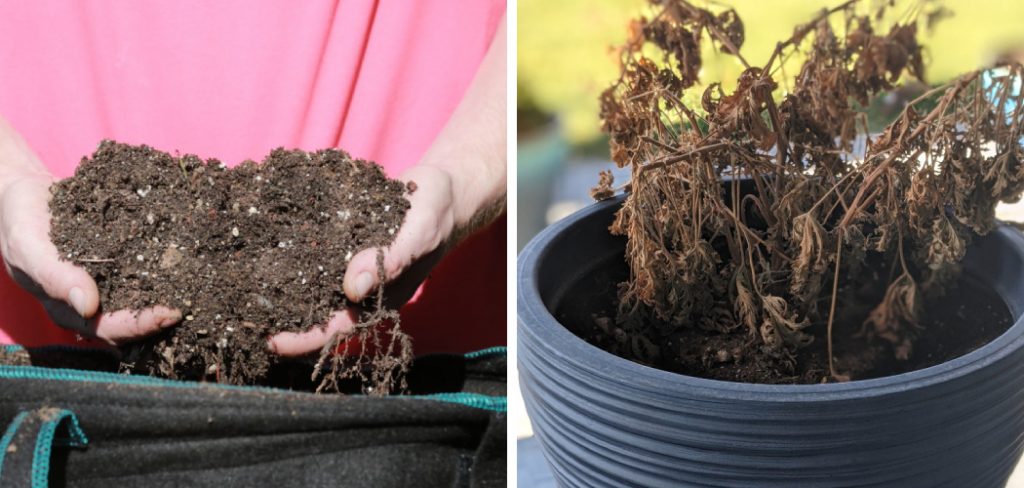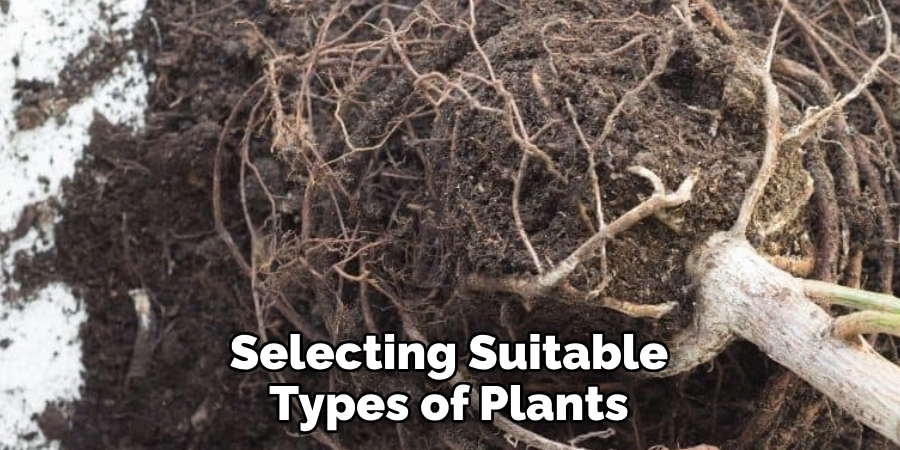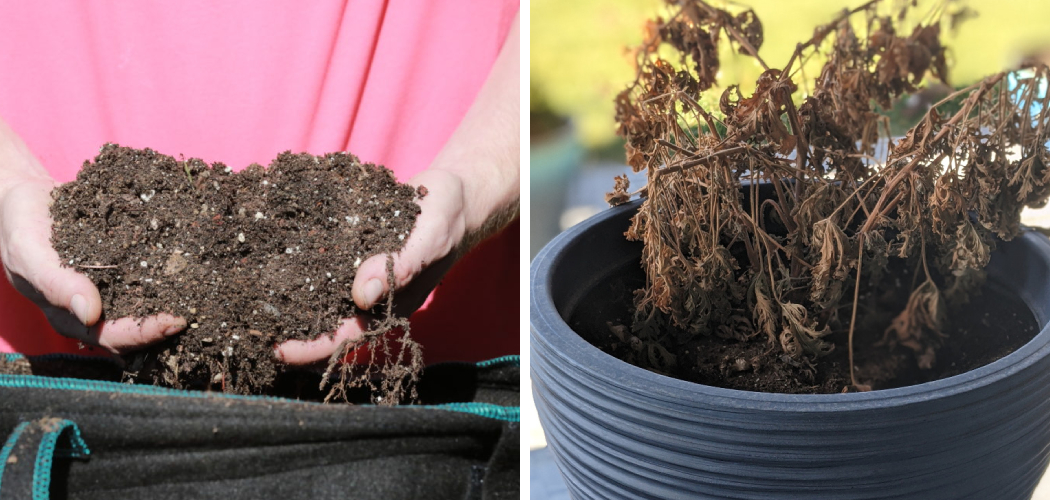To reuse soil from a dead plant, remove any debris and weeds, mix it with fresh compost, and amend it with organic matter to restore its fertility and nutrients. Reusing soil from dead plants is an eco-friendly and cost-effective way to nourish your garden.
Instead of purchasing new soil, you can recycle and repurpose the existing soil. By following simple steps like removing debris and weeds, incorporating fresh compost, and adding organic matter, you can rejuvenate the soil’s fertility and nutrient content. This process not only reduces waste but also ensures that your plants receive the necessary nourishment for healthy growth.
In this article, we will explore the benefits of reusing soil, along with practical tips to successfully reuse soil from dead plants. Let’s get started and give your garden an organic boost!

Benefits Of Reusing Soil From Dead Plants
Reusing soil from dead plants offers several benefits. It helps reduce waste and save money by preventing the need for new soil for every plant. This promotes sustainability and conserves resources by minimizing the amount of soil that goes to waste.
Additionally, reusing soil improves its structure and fertility, making it more suitable for future plant growth. This means that you don’t have to rely heavily on synthetic fertilizers and amendments, as the soil retains its nutrients. By reusing soil, you not only save money but also contribute to a healthier and more sustainable gardening practice.
So, instead of discarding soil from dead plants, consider giving it a second life by reusing it for new plantings.
How to Reuse Soil from Dead Plant: Step by Step Guide
Factors To Consider Before Reusing Soil
Assess the health of the dead plant first and understand its previous nutrient requirements to determine if the soil is suitable for reuse. Evaluate the condition and fertility of the soil, considering its texture, drainage, and ph levels. Look for any potential diseases or pests that could have affected the previous plant, as these could be present in the soil.
Check for signs of fungal infections, wilted leaves, or insect damage. It’s important to address these issues before reusing the soil to prevent future plant problems. Additionally, consider adding organic matter or amendments to improve the soil’s fertility and structure.
Properly preparing and rejuvenating the soil will ensure optimal conditions for any new plants or seedlings.
Steps To Rejuvenate The Soil
To reuse soil from a dead plant, follow these 6 simple steps. First, remove any remaining plant debris. Next, aerate the soil for better drainage and airflow. Then, test the soil’s ph and nutrient levels. Afterwards, amend the soil with organic matter or compost to improve its quality.
Lastly, incorporate appropriate fertilizers or amendments to replenish essential nutrients. By following these steps, you can rejuvenate the soil and make it suitable for growing new plants. Reusing soil not only saves money but also reduces waste. So, next time you have a dead plant, don’t throw away the soil, recycle it for another gardening project!
Techniques For Improving Soil Structure
Improving soil structure is crucial for reusing soil from dead plants. To effectively till or loosen compacted soil, use a garden fork or tiller. Adding organic matter like compost will enhance water retention, allowing for better nutrient absorption by plants.
Another technique is using cover crops, which protect the soil from erosion and add nutrients when turned into the soil. Avoid over-watering or using excessive chemicals, as this can disrupt the natural balance of the soil. Remember, maintaining soil structure is essential for healthy plant growth and optimal reuse of soil from dead plants.
By following these techniques, you can revitalize and repurpose your soil effectively.
Selecting Plants That Complement The Soil’S Condition
Select plants that match the soil’s condition, including texture, drainage, and nutrient levels. Choose plants that have similar ph and nutrient requirements for optimal growth. Consider the plant’s tolerance to specific soil conditions such as acidity or alkalinity. Ensure that the plants’ growth habits and spacing requirements align with the available soil.
By following these steps, you can successfully reuse soil from dead plants and maximize its potential. Reusing soil not only saves you money but also reduces waste and promotes a sustainable gardening practice.
Types Of Plants Suitable For Reused Soil
Reuse soil from dead plants by selecting suitable types of plants. Opt for hardy perennials and native plants that thrive in your area’s climate. Also, consider vegetables and herbs with adaptive qualities. These plants can grow well in reused soil and be used for culinary purposes.
Another option is to choose ornamental plants with low maintenance requirements. They can add beauty to your garden without demanding too much attention. Additionally, drought-tolerant plants are an excellent choice for water-conservation purposes. They conserve water while still flourishing in reused soil.

By following these guidelines, you can make the most of your dead plant soil and create a thriving garden.
Frequently Asked Questions For How To Reuse Soil From Dead Plant
Can You Reuse Soil From Dead Plants?
Yes, you can reuse soil from dead plants as long as there aren’t any signs of diseases or pests. Simply remove the dead plant, turn over the soil to aerate it, and mix in some organic matter like compost. This will replenish nutrients and improve the soil structure for future planting.
How Do You Sterilize Soil For Reuse?
To sterilize soil for reuse, you can bake it in the oven at 200 degrees fahrenheit for 30 minutes. This helps eliminate any pests, diseases, or weed seeds present in the soil. Another method is to use a solarization technique, where you cover the soil with clear plastic for several weeks to heat the soil and kill pathogens.
Should You Add Nutrients To Reused Soil?
Yes, it is recommended to add nutrients to reused soil to replenish its fertility. Organic matter such as compost, aged manure, or worm castings are excellent choices to enrich the soil. Additionally, using a balanced fertilizer with essential macronutrients like nitrogen, phosphorus, and potassium will promote healthy plant growth in the recycled soil.
How Often Can You Reuse Soil From Dead Plants?
Soil can be reused from dead plants on an ongoing basis, as long as you take proper care of it. After each use, remember to replenish nutrients and improve soil structure by adding organic matter. Regularly monitor the soil for pests, diseases, and signs of nutrient deficiency to ensure the best results with each reuse.
Is It Necessary To Change The Soil After A Plant Dies?
It is not always necessary to change all the soil after a plant dies, especially if the cause of death was not due to soil-related issues. As long as the soil is healthy and free from diseases or pests, you can reuse it by following proper soil preparation techniques and adding amendments if needed.
Conclusion
Reusing soil from dead plants is a sustainable and cost-effective practice for any avid gardener. By following a few simple steps, you can rejuvenate your soil and give it new life. Firstly, remove any dead plant material and weeds to prevent the spread of diseases and pests.
Then, amend the soil with organic matter such as compost or aged manure to improve its fertility and structure. Remember to test the ph levels and adjust accordingly to suit the needs of your plants. Lastly, rotating your crops and practicing crop rotation can further enhance soil health and prevent nutrient depletion.
By reusing soil, you not only minimize waste but also maintain a healthy and thriving garden year after year. So, embrace the concept of soil recycling and reap the benefits of a sustainable and productive garden.

